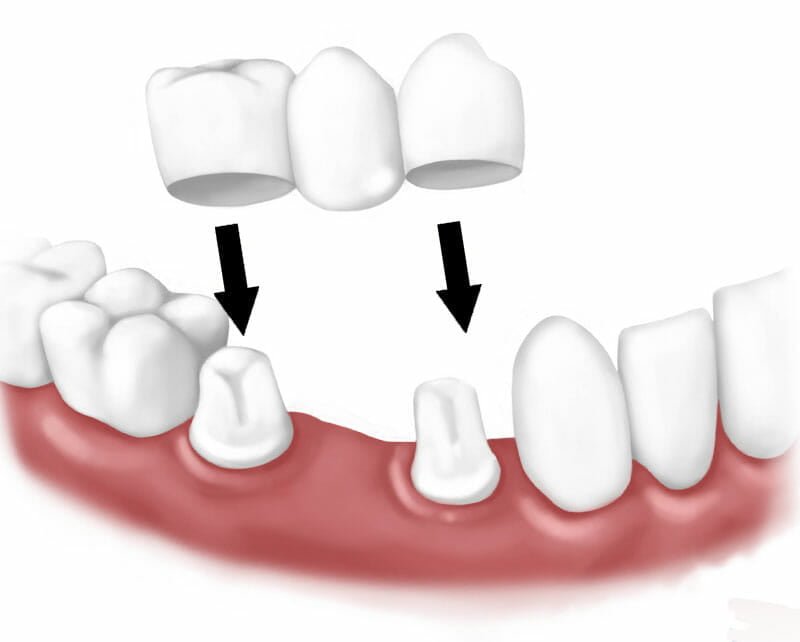Crowns and Bridges Play a Key Role in Restorative Dentistry
Crowns and bridges are both excellent options when a tooth is removed, lost, or severely damaged. They are unlike dentures in that they are cemented in place, so they are not removable. They are not, however, considered a permanent solution like a dental implant.
While they are most often utilized to fix an existing dental issue, crowns and bridges can also be placed to help prevent future issues and for cosmetic purposes.
What is a crown?
Natural teeth have roots, which are below the gum line, and a crown, which is the visible part. A dental crown is a fabricated tooth-shaped cap that replaces a natural tooth crown. If you have a severely damaged, cracked, broken, or chipped tooth, or if you had a root canal, you may need a dental crown.
Placement of a dental crown requires a tooth root. If the root is also missing, a dental implant can be placed into the jawbone to replace it.
Crowns protect weak teeth in danger of breaking, restore a broken tooth, and strengthen a tooth when there is not enough tooth remaining to keep a filling in place. They are also the best option for covering a dental implant.
Another common use of dental crowns is in cosmetic dentistry. They can cover teeth that are severely misshapen or discolored.
Dental crowns are typically fabricated from ceramic, porcelain, or composite resin to match the color of your other teeth. They can, however, also be made from nickel or gold alloy.
What is the process for getting a dental crown?
After a thorough examination, including the use of digital x-rays, Dr. de la Paz will discuss your options. Together, you will come up with a treatment plan.
Depending on your situation, your tooth may need preparation before getting an impression. This may include removal of decay, root canal therapy, or changing the shape of your tooth. Some teeth require filing down, whereas others may need building up.
If tooth preparation is needed, Dr. de la Paz will numb the affected area for your comfort.
After taking the impression of your teeth, a temporary crown will cover the tooth until the permanent crown is received from the lab.
Once we receive the permanent crown, Dr. de la Paz will cement it in place.
What is a dental bridge?

A dental bridge, sometimes called a fixed partial denture, bridges the gap when a tooth or teeth are missing or removed. Since it is cemented in place, it is not removable like dentures.
Unlike a dental crown, a tooth root is not needed.
Instead, a dental bridge is anchored in place by two or more dental crowns on teeth surrounding the gap. These anchoring teeth are called abutment teeth. The bridge is made up of one, two, or three artificial teeth. The artificial teeth are called pontics, and they fill in the void of the missing tooth or teeth. They are most often composed of porcelain or composite resin.
Dental bridges can:
- Restore your ability to speak and chew properly
- Maintain proper shape of your face
- Restore your smile
- Distribute bite forces properly
- Prevent teeth from moving or drifting out of place
The downside of a bridge is that nothing replaces a missing tooth root. When the socket is empty, jawbone loss occurs.
What is the process for a dental bridge?
At the first visit, Dr. de la Paz will prepare the abutment teeth. This involves reshaping and filing for placement of a dental crown. Then, we make impressions of your teeth.
A temporary bridge is placed to protect your gums and teeth until your permanent bridge is ready.
The impressions are sent to the lab, where the crowns, pontics, and bridge are fabricated.
When we receive your permanent bridge, you will return for removal of the temporary bridge. Dr. de la Paz will adjust the new bridge to achieve a proper fit and cement it in place.
Contact us Today
If you have a missing, broken or damaged tooth, Call us today at (253) 475-0262 Or Schedule An Appointment Online for a consultation.

